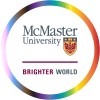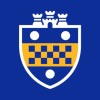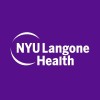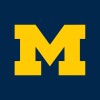
My Stroke Team (MYST): Stroke App Pilot Study
StrokeComorbidity1 moreMost stroke survivors live with other chronic health conditions that can negatively affect their recovery and overall health and well-being. Although stroke care has improved, there are still many challenges to the delivery of community-based stroke care. These challenges include: poor coordination of care across health care providers and settings; limited communication among health care providers; limited use of evidence-based treatment guidelines; difficulties navigating community services and supports; and limited client and family caregiver involvement in making healthcare decisions. The investigators developed a new mobile health (mHealth) application, My Stroke Team (MYST), to address these challenges to improve the overall quality of stroke care at home. This study will expand this work to: 1) explore the feasibility and acceptability of this mobile tool, 2) determine its impact and usability for home care providers, stroke survivors, and their family caregivers, and 3) determine its impact on the costs of use of health services.

Hispanic Secondary Stroke Prevention Initiative
StrokeStroke is a leading cause of death and functional impairments and stroke risk factors (SRFs) disproportionately affect Latino populations. In the Hispanic Secondary Stroke Prevention Initiative (HISSPI) the investigators propose a study using Community Health Workers (CHW) and mobile technologies using cell phones to reduce the risk for a recurrent stroke among Latino stroke patients. The project examines the effectiveness of a combined multilevel intervention consisting of Community Health Workers (CHW) and mobile based phone technologies in lowering of systolic blood pressure (SBP) which is the most important risk factor for recurrent stroke.

Mirror Box Therapy for Upper Limb Function With Stroke
Cerebrovascular Accident (CVA)StrokeIndividuals who have sustained a stroke are often left with residual deficits of the upper limb such as impaired movement and sensation. These deficits restrict functional use of the limb in everyday activities and can result in increased dependency upon others to engage in some tasks. Regaining independence through functional use of the arm and hand is an aim of occupational therapy rehabilitation. Mirror box therapy (MBT) is a relatively new innovation being introduced into occupational therapy interventions. Some studies have reported it to be beneficial in upper limb rehabilitation, however, these studies have not involved a sub-acute stroke population. This pilot study aims to provide robust evidence, using RCT design, as to whether this type of therapy may offer greater potential in functional gains in the sub-acute recovery period of stroke than standard rehabilitation of the upper limb alone.

Intention to Prescribe/Take OAC Depending on the Number of Risk Diagrams , and Period for the Estimation...
Atrial FibrillationStrokeRandomized study concerning the effect of the number of risk diagrams (with treatment +/- without treatment), the period of stroke risk estimation (one year or five years) and the target of prescription (the patient with atrial fibrillation or the physician himself, imagining she/he has atrial fibrillation) on the intention to prescribe or not oral anticoagulation.

Stroke Caregiver Empowerment
StrokeThe purpose of this study is to refine STROKE-CARE for caregivers and explore changes in caregiver and care-recipient outcomes

The Safety and Tolerability of an Aerobic and Resistance Exercise Program With Cognitive Training...
Cerebral StrokeIt is estimated that 2 out of 3 patients with a stroke have some problems with their memory, difficulties performing certain tasks, making decisions and learning new things. In addition, many stroke patients do not get regular exercise and are often sedentary. Both physical and cognitive exercise have the potential to improve quality of life, cognition, and overall health, but the safety and tolerability of such interventions is not clear in stroke patients. The investigators will examine these outcomes by allocating stroke survivor participants to one of two groups: a combined exercise and cognitive training program and a sham control group.

Music Therapy/Physical Therapy Intervention to Enhance Well-being and Functional Recovery Post-stroke...
Stroke With HemiparesisThe purpose of this study is to see if group Music Therapy and Physical Therapy will help in the recovery from stroke. It is hoped that music and physical therapy in a group setting will help physical, mental, and social well-being.

Stroke Gait Rehabilitation Using Functional Electrical Stimulation
Cerebrovascular AccidentThe study is a prospective interventional study to assess the changes in corticospinal excitability and spinal reflex excitability of in response to rehabilitative strategies and protocols that are commonly used during physical therapy treatment of gait disorders among post-stroke subjects. As part of this protocol, 55 individuals with chronic stroke will be assigned to either Cohort 1 or Cohort 2, and will participate in 1-18 gait training sessions. If interested, study participants can also complete both study cohorts sequentially (with at least 3-weeks duration between switching from one cohort to the second). The study examines the effects among two cohorts of post stroke patients. Cohort 1 will participate in 18 sessions of fast treadmill walking plus Functional Electrical Stimulation (FastFES) and Cohort 2 will participate in 1-3 sessions of FastFES and fast walking without FES.

A Caregiver-mediated Intervention Improves the Functional Ability of Home-living Chronic Stroke...
StrokeTo examine the feasibility of improving stroke patients' physical functional recovery and social participation through improving caregiver's care capability.

A Community Partnership to Treat Stroke
StrokeGetting to the hospital quickly is the key to treating stroke. African Americans suffer more strokes with worse outcomes and receive stroke treatments less often than European Americans. This project will work to reduce these health disparities by creating and testing the feasibility of a peer-led faith-based behavioral intervention in an African American community with a goal to increase calls to 911 so stroke patients can be treated quickly.
